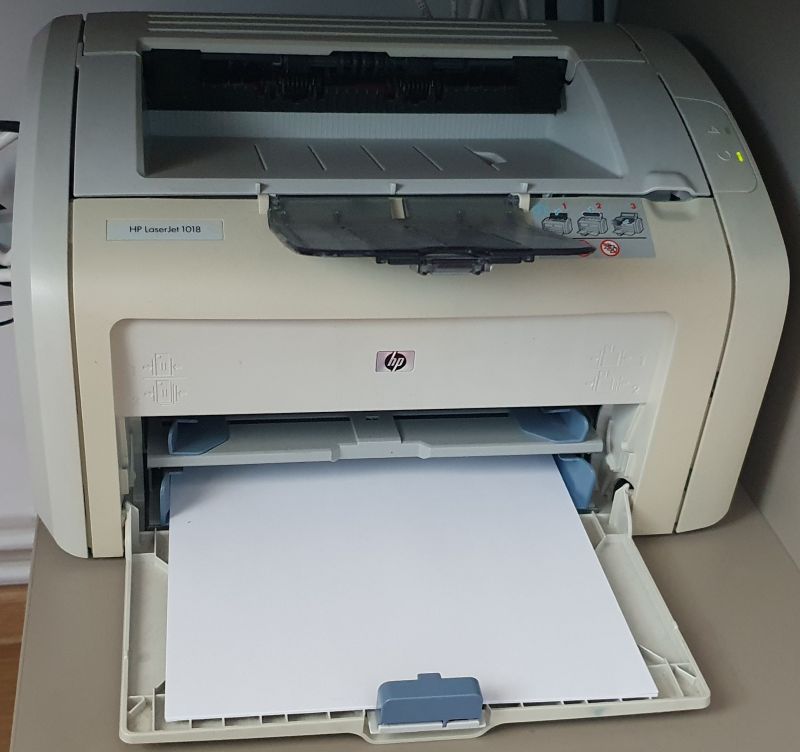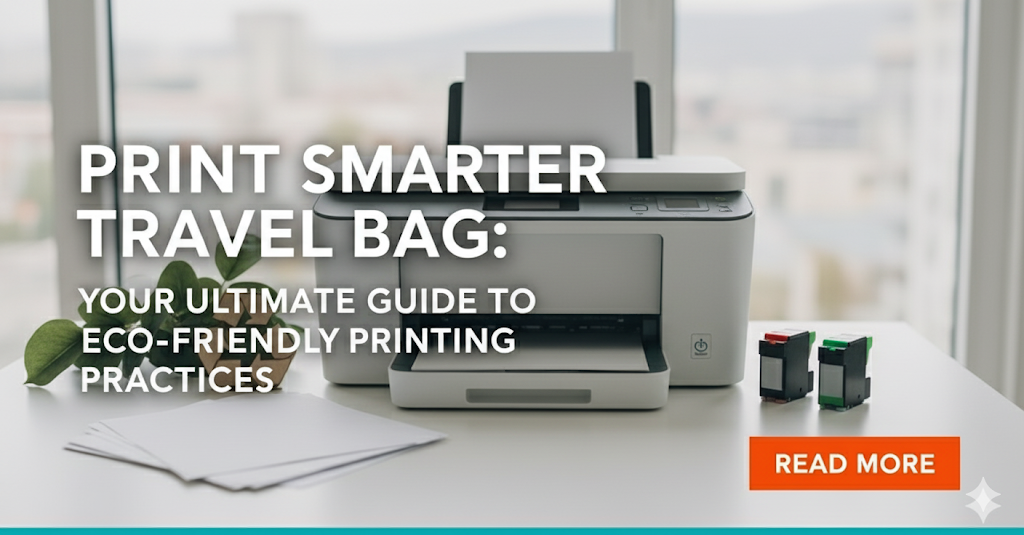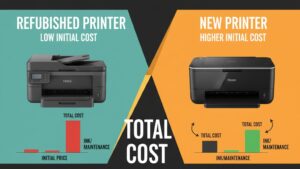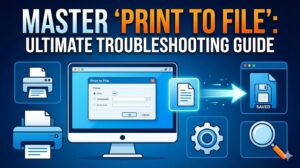Adopting eco-friendly printing practices is one of the easiest and most impactful ways to reduce your environmental footprint, both at home and in the office. We often click “Print” without a second thought, but the hidden costs to our planet—and our wallets—add up quickly. From the trees used for paper and the resources consumed to create ink cartridges, to the energy your printer uses, every page has an impact.
But here’s the good news: you don’t have to stop printing altogether. By making a few small, conscious changes to your habits, you can significantly cut down on waste, save a surprising amount of money on ink and paper, and contribute to a healthier planet. This guide will show you exactly how to do it with simple, actionable steps that anyone can follow.
What Exactly Are Eco-Friendly Printing Practices?
At its core, eco-friendly printing practices refer to a mindful approach to printing that prioritizes sustainability. It’s not about one single action, but a collection of habits and choices designed to minimize waste and conserve resources. This philosophy is built on three essential pillars:
- Reduce: The most effective practice is to simply consume less. This means reducing the amount of paper, ink, and energy you use. It involves questioning whether a document needs to be printed at all and using settings that consume fewer resources when you do print.
- Reuse: This pillar focuses on getting the most out of every resource. The most common example is printing on both sides of a sheet of paper (duplex printing), instantly doubling its usefulness. It also includes reusing single-sided prints as scrap paper for notes.
- Recycle: The final step is ensuring that what you can’t reuse is disposed of responsibly. This means recycling used paper and, crucially, properly recycling empty ink and toner cartridges to keep them out of landfills, where they can take hundreds of years to decompose.
By embracing these principles, you create a cycle of sustainability that benefits the environment and reduces your printing costs.
7 Powerful Strategies for Eco-Friendly Printing

Transforming your printing habits is easy when you have a clear plan. Here are seven powerful strategies you can start using today to make a real difference.
Strategy 1: Think Before You Print
The most sustainable page is the one you never print. Before you hit that button, ask yourself a simple question: “Do I truly need a physical copy of this?” Often, the answer is no. You can save documents as PDFs, use digital note-taking apps, or simply bookmark webpages for future reference. This single habit is the most effective way to reduce printing waste.
Strategy 2: Master the Art of Print Preview
The “Print Preview” function is your best friend. It allows you to see exactly what your document will look like before it’s printed. Use it to:
- Catch formatting errors that might waste a page.
- Identify and omit unnecessary pages, like the final page that only contains a website URL or a company logo.
- Select and print only a specific range of pages instead of the entire document.
Strategy 3: Embrace Draft Mode and Grayscale

Your printer settings hold powerful ink-saving potential. “Draft,” “Economy,” or “Fast” mode uses significantly less ink by printing at a lower resolution. This is perfect for internal documents, drafts, or reference materials where perfect quality isn’t necessary. Similarly, printing in “Grayscale” or “Black and White” saves your expensive color ink cartridges for when you truly need them.
Strategy 4: Go Duplex – Print on Both Sides
This is a game-changer. Automatic duplex printing, a feature available on most modern printers, prints on both sides of the paper automatically. It instantly cuts your paper consumption in half. If your printer doesn’t have an automatic duplex feature, you can still do it manually by printing the odd-numbered pages first, then flipping the stack over and printing the even-numbered pages.
Strategy 5: Use Eco-Fonts
Did you know that the font you choose can impact how much ink you use? Some fonts are designed to be more efficient. Eco-fonts like Ryman Eco or Ecofont have tiny gaps or holes within the letters, using up to 20-30% less ink without sacrificing readability at normal sizes. While it’s a small change, it adds up over hundreds of pages.
Strategy 6: Print Multiple Pages on One Sheet
Another brilliant setting is “Pages per Sheet.” This allows you to print two, four, or more pages onto a single side of paper. This is incredibly useful for printing out presentation slides, lengthy reference documents, or articles that you just need to read and don’t need in full size.
Strategy 7: Choose the Right Printer
If you’re in the market for a new printer, consider its environmental credentials. Look for printers with an ENERGY STAR certification, which means they meet strict energy efficiency guidelines. Furthermore, ink tank printers (like Epson EcoTank or Canon MegaTank) are among the best eco-friendly printers because they use refillable reservoirs instead of disposable plastic cartridges, drastically reducing plastic waste.

Beyond the Print Button: Tools and Materials
Your commitment to eco-friendly printing practices can extend to the materials you use. When buying paper, look for options with a high percentage of post-consumer recycled content or paper that is certified by the Forest Stewardship Council (FSC), which ensures it comes from responsibly managed forests.
Properly managing your consumables is also key. Never throw ink or toner cartridges in the trash. Most manufacturers, including HP, Canon, and Brother, have free mail-in recycling programs. Many office supply stores also have drop-off bins.
Finally, keep your printer’s internal software, or firmware, up to date. Manufacturers release updates that can improve printer efficiency and fix bugs. To understand this better, you can learn What Firmware Is and Why You Should Care from a reputable tech source like How-To Geek.
Common Printing Mistakes to Avoid
Sometimes, being more eco-friendly is about what you stop doing. Here are some common wasteful habits to break.
- Printing Every Email: Emails are designed to be digital. If you need to save one, file it in a digital folder. Printing emails, especially long chains with multiple replies, is a major source of paper and ink waste.
- Tossing a Cartridge at the First Warning: Low ink warnings are often conservative. Most cartridges can print dozens more pages after the first notification pops up. Keep using it until you see the print quality actually start to fade before replacing it.
- Leaving the Printer On 24/7: While modern printers have low-power sleep modes, they still draw a small amount of electricity. If you know you won’t be using your printer overnight or for the weekend, turn it off completely to save energy.
- Discarding Jammed or Misprinted Paper: Don’t immediately crumple up and throw away a sheet of paper because of a jam or a small error. Smooth it out and place it in a scrap pile next to your printer. It’s perfect for taking notes, scribbling ideas, or for test prints.
Frequently Asked Questions (FAQs)
1. Is a laser or inkjet printer more eco-friendly? It depends. Laser printers are generally more energy-efficient during printing and their toner cartridges often last longer, creating less waste. However, ink tank inkjet printers produce very little cartridge waste. For general home use, a highly efficient ink tank printer is often a great sustainable choice.
2. Do eco-fonts really save a significant amount of ink? Yes, they do. While a single page might not show a huge difference, the savings become substantial over the lifetime of an ink cartridge when printing hundreds of pages. It’s a simple, free way to improve efficiency.
3. Is recycled paper bad for my printer? This is a common myth. Modern, high-quality recycled paper is designed to work just as well as virgin paper and will not harm your printer. Just be sure to buy it from a reputable brand.
4. How do I properly dispose of old ink and toner cartridges? The best way is to use a dedicated recycling program. Check the website of your printer manufacturer (like HP Planet Partners) or take them to a local office supply store like Staples or Office Depot, which almost always have free drop-off recycling programs.
Conclusion
Embracing eco-friendly printing practices is a powerful act that delivers triple benefits: it protects our planet, conserves natural resources, and saves you money. By making conscious choices—thinking before you print, leveraging your printer’s settings, and choosing sustainable materials—you can transform a mundane task into a positive action. Each page not printed, each drop of ink saved, and each cartridge recycled is a small victory.
Start with one or two tips from this guide and build from there. You’ll quickly find that printing smarter is not only better for the environment but also a more efficient and cost-effective way to manage your home or office.
Frustration-Free Guide: How to Set Up Wireless Printing on Mac Read More.




